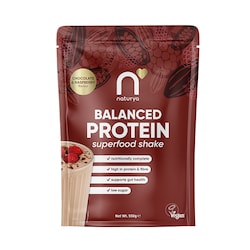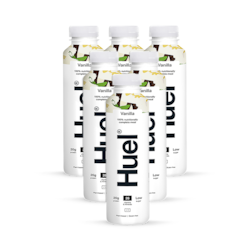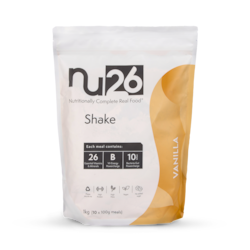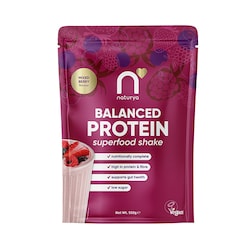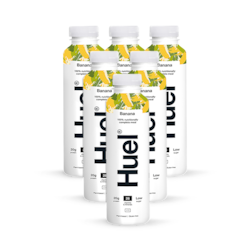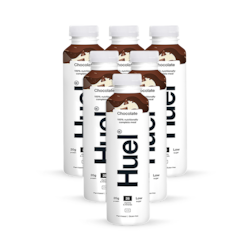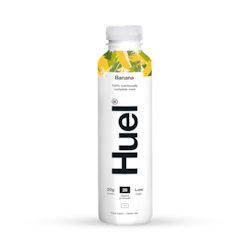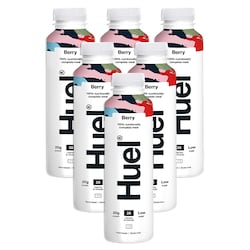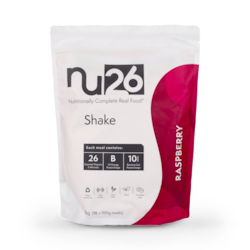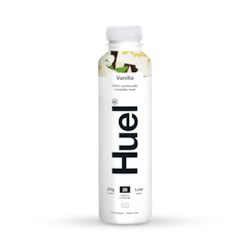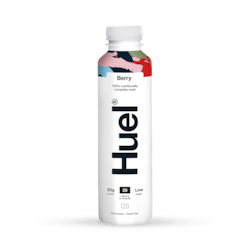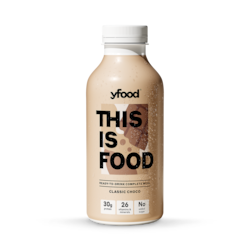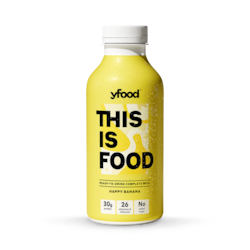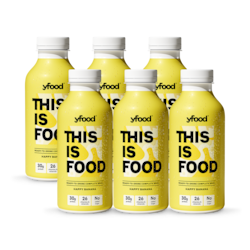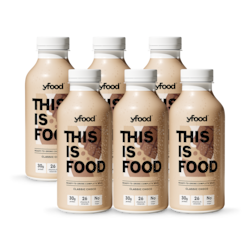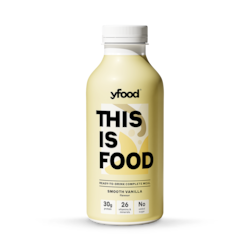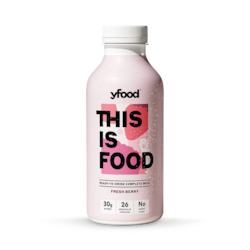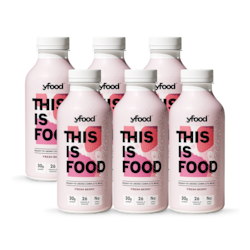15% off £25 OR 20% off £35
Code:DECIDE
11 of the most nutritious foods
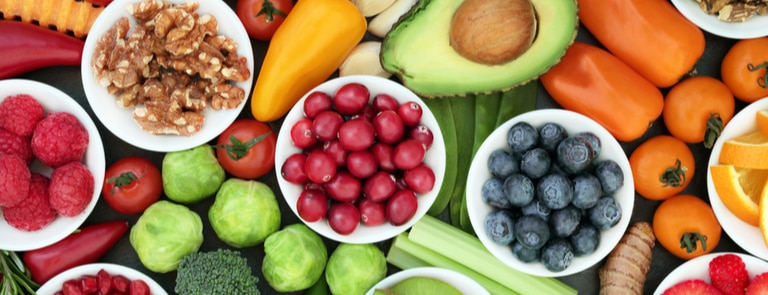
Discover 11 of the most nutritious foods we're loving, what nutrient goodness they contain, their benefits, and tips on how to eat them.
Summary
1Most nutritious fruits
The most nutritious fruits are... Blueberries, small but mighty, blueberries are the star of the show when it comes to nutritious fruit. macro shot...
2Most nutritious vegetables
The most nutritious vegetables are... Potato, whether you stay classic with white potatoes or spice it up with a sweet potato, all potatoes are...
3Most nutritious animal products
The most nutritious animal products are... Salmon, oily fish are incredibly healthy, and salmon is one of the most nutritious out there. Salmon is...
There is only so much you can eat in a day, so you need to make it count with nutrient-dense foods.
Our bodies need lots of different vitamins, minerals, and other nutrients to keep it healthy, making a healthy diet packed with essential nutrients very important.
But which foods contain the most?
To give you some inspiration we’ve put together a list of 11 of the most nutritious foods you can find, along with their nutritional values, health benefits, and how to use them.
11 of the most nutritious foods
Here are our top 11 most nutrient-dense foods, chosen for their unique varieties and concentrations of the nutrients we need to thrive.
- Blueberries
- Potatoes
- Seaweed
- Kale
- Garlic
- Salmon
- Mackerel
- Anchovies
- Mussels
- Eggs
- Dark chocolate
Most nutritious fruits
The most nutritious fruits are...
1. Blueberries
Small but mighty, blueberries are the star of the show when it comes to nutritious fruit.

They have a good nutrient profile, especially when it comes to vitamin K, vitamin C and manganese, but they really shine when it comes to their antioxidant levels.
There have been several studies into blueberries and human health, including one that showed that blueberries improved the memory of older adults.2
Nutrition of blueberries
| 100g blueberries, raw | |
|---|---|
| Calories | 57kcal |
| Carbohydrates | 14g |
| Of which sugars | 10g |
| Fats | 0.3g |
| Saturated fats | 0g |
| Protein | 0.7g |
| Fibre | 2.4g |
| Vitamin B1 | 0.037mg (3% DV)* |
| Vitamin B2 | 0.041mg (3% DV) |
| Vitamin B3 | 0.418mg (3% DV) |
| Vitamin B6 | 0.052mg (4% DV) |
| Vitamin C | 9.7mg (11% DV) |
| Vitamin E | 0.57mg (3% DV) |
| Vitamin K | 19.3mcg (16% DV) |
| Copper | 0.6mg (7% DV) |
| Iron | 0.3mg (2% DV) |
| Potassium | 77mg (2% DV) |
| Manganese | 0.336mg (15% DV)3 |
*DV: % daily value tells you how much nutrition is in a serving of food and how it contributes to a balanced daily diet.
How to enjoy blueberries: plonk some blueberries into your morning bowl of yoghurt, oats, or a smoothie, or enjoy them as their naturally sweet selves as a snack throughout the day.
Most nutritious vegetables
The most nutritious vegetables are...
2. Potatoes

Whether you stay classic with white potatoes or spice it up with a sweet potato, all potatoes are highly nutritious.
The humble spud contains a little bit of almost every nutrient you need. They’re full of B vitamins, vitamin C, copper, iron and manganese, as well as a healthy serving of fibre.
Potatoes are great for keeping you full, too. One study found that it scored higher than any other food measured in satiety values.4
Nutrition of potatoes
| 100g potatoes, raw | |
|---|---|
| Calories | 58kcal |
| Carbohydrates | 12g |
| Fats | 0.1g |
| Saturated fats | 0g |
| Protein | 2.6g |
| Fibre | 2.5g |
| Vitamin B3 | 1.033mg (6% DV) |
| Vitamin B5 | 0.302mg (6% DV) |
| Vitamin B6 | 0.239mg (18% DV) |
| Vitamin C | 11.4mg (13% DV) |
| Copper | 0.42mg (47% DV) |
| Iron | 3.24mg (18% DV) |
| Potassium | 413mg (9% DV) |
| Manganese | 0.602mg (26% DV)5 |
*DV: % daily value tells you how much nutrition is in a serving of food and how it contributes to a balanced daily diet.
How to enjoy potatoes: mash them, roast them, boil them, fry them, steam them – there are so many ways to enjoy a potato. The healthiest way to enjoy them is by steaming them, as this process locks in more of the nutrients.

3. Seaweed
Although it may not be the first thing that springs to mind when you think of seafood, seaweed is a highly nutritious treat often used in Asian cuisine.
It’s particularly rich in vitamin B9 (folic acid) and other B vitamins, iron, and copper.
Nutrition of seaweed
| 100g seaweed, raw | |
|---|---|
| Calories | 41kcal |
| Carbohydrates | 7.9g |
| Of which sugars | 0.6g |
| Fats | 0.5g |
| Saturated fats | 0.1g |
| Protein | 3.5g |
| Fibre | 0.7g |
| Vitamin A | 95mcg (11% DV)* |
| Vitamin B1 | 0.069mg (6% DV) |
| Vitamin B2 | 0.275mg (21% DV) |
| Vitamin B3 | 1.180mg (7% DV) |
| Vitamin B9 | 174mcg (44% DV) |
| Vitamin C | 15mg (17% DV) |
| Vitamin K | 25.1mcg (21% DV) |
| Copper | 0.23mg (26% DV) |
| Iron | 2.28mg (13% DV) |
| Calcium | 129mg (10% DV) |
| Phosphorus | 60mg (9% DV) |
| Zinc | 0.89mg (8% DV)6 |
*DV: % daily value tells you how much nutrition is in a serving of food and how it contributes to a balanced daily diet.
How to enjoy seaweed: You can find it in dishes like sushi, where it is often referred to as nori, as well as in miso soup. There are also supplements and even crisp alternatives made out of seaweed if you fancy something different.

4. Kale
If there was ever a king of the leafy greens, kale would be it!
Kale is full of vitamins and minerals, like vitamin A, vitamin C, vitamin K, calcium and manganese. And let’s not forget the fibre it’s packing.
Kale is also rich in antioxidants and bioactive compounds that have a protective effect on the body.7
Nutrition of kale
| 100g kale, raw | |
|---|---|
| Calories | 35kcal |
| Carbohydrates | 4.4g |
| Of which sugars | 1g |
| Fats | 1.5g |
| Saturated fats | 0.2g |
| Protein | 2.9g |
| Fibre | 4.1g |
| Vitamin A | 241mcg (27% DV)* |
| Vitamin B1 | 0.113mg (9% DV) |
| Vitamin B2 | 0.347mg (27% DV) |
| Vitamin B6 | 0.147mg (11% DV) |
| Vitamin B9 | 62mcg (16% DV) |
| Vitamin C | 93.4mg (104% DV) |
| Vitamin K | 389.6mcg (325% DV) |
| Copper | 0.05mg (6% DV) |
| Iron | 1.6mg (9% DV) |
| Calcium | 254mg (20% DV) |
| Manganese | 0.920mg (40% DV) |
| Phosphorus | 55mg (8% DV)8 |
*DV: % daily value tells you how much nutrition is in a serving of food and how it contributes to a balanced daily diet.
How to enjoy kale: kale makes a great alternative to spinach and other leafy green veg for any meal. Try it on your Sunday roast or sauté it with lemon and garlic to accompany fish, meat, or tofu.
5. Garlic
Garlic is loved the world over, even if it does make us smelly! But it has good reason to be up there with our favourite foods as it is just as nutritious as it is tasty.

It’s high in protein, vitamin C, selenium, as well as it’s active ingredient allicin. The allicin compound has been found to lower LDL (bad) cholesterol and blood pressure, as well as raise levels of good cholesterol.9,10,11,12
Raw garlic has also been found to have powerful antifungal and antibacterial properties.13,14
Nutrition of garlic
| 100g garlic, raw | |
|---|---|
| Calories | 143kcal |
| Carbohydrates | 28g |
| Fats | 0.4g |
| Protein | 6.6g |
| Fibre | 2.7g |
| Vitamin C | 10mg (11% DV)* |
| Selenium | 9.8mcg (18% DV)15 |
*DV: % daily value tells you how much nutrition is in a serving of food and how it contributes to a balanced daily diet.
How to enjoy garlic: garlic easily enhances most meals, from curries and stir frys to loaves of fresh bread and pasta.
Most nutritious animal products
The most nutritious animal products are...
6. Salmon
Oily fish are incredibly healthy, and salmon is one of the most nutritious out there.

Salmon is rich in omega-3 fatty acids, which are necessary for optimum health, especially when it comes to the heart and the brain.
Research suggests that people who eat oily fish regularly have a lower risk of developing dementia, depression, heart disease, and other health conditions.16,17,18,19
Nutrition of salmon
| 100g salmon, raw | |
|---|---|
| Calories | 127kcal |
| Carbohydrates | 0g |
| Of which sugars | 0g |
| Fats | 4.4g |
| Saturated fats | 0.8g |
| Omega-3 | 0.56g |
| Protein | 21g |
| Fibre | 0g |
| Vitamin A | 35mcg (4% DV)* |
| Vitamin B1 | 0.08mg (7% DV) |
| Vitamin B2 | 0.105mg (8% DV) |
| Vitamin B3 | 7.995mg (50% DV) |
| Vitamin B6 | 0.611mg (47% DV) |
| Vitamin B12 | 4.15mcg (173% DV) |
| Vitamin D | 10.9mcg (54% DV) |
| Copper | 0.06mg (7% DV) |
| Magnesium | 27mg (7% DV) |
| Phosphorus | 261mg (37% DV) |
| Potassium | 366mg (8% DV) |
| Selenium | 31.4mcg (57% DV)20 |
*DV: % daily value tells you how much nutrition is in a serving of food and how it contributes to a balanced daily diet.
How to enjoy salmon: salmon is full of protein, making it a great start to the day – smoked salmon bagel, anybody? As well as a nourishing meal after you’ve exercised, e.g. a salmon stir fry with fresh veggies.

7. Mackerel
Another oily fish that serves a big shout out is mackerel.
Just like salmon, it’s high in omega-3 fatty acids, as well as vitamin D, vitamin B12 and other B vitamins.
This means it can help support healthy hearts and brains, as well as provide a tasty meal.
Nutrition of mackerel
| 100g mackerel, raw | |
|---|---|
| Calories | 189kcal |
| Carbohydrates | 0g |
| Of which sugars | 0g |
| Fats | 12g |
| Saturated fats | 2.9g |
| Omega 3s | 2.2g |
| Protein | 19g |
| Fibre | 0g |
| Vitamin A | 40mcg (4% DV)* |
| Vitamin B1 | 0.155mg (13% DV) |
| Vitamin B2 | 0.348mg (27% DV) |
| Vitamin B3 | 8.829mg (55% DV) |
| Vitamin B6 | 0.376mg (29% DV) |
| Vitamin B12 | 7.29mcg (304% DV) |
| Vitamin D | 13.8mcg (69% DV) |
| Vitamin E | 1.35mg (6% DV) |
| Copper | 0.08mg (9% DV) |
| Iron | 1.48mg (8% DV) |
| Magnesium | 60mg (15% DV) |
| Phosphorus | 187mg (27% DV) |
| Selenium | 41.6mcg (76% DV)21 |
*DV: % daily value tells you how much nutrition is in a serving of food and how it contributes to a balanced daily diet.
How to enjoy mackerel: mackerel tastes wonderful served with new potatoes, pasta, salad, roasted vegetables, rice, or any other way you want to cook it. Try swapping it for salmon in a couple of dishes to see if you like it.
8. Anchovies

Anchovies are one of the only types of fish we like to eat whole, which makes it an amazingly nutritious snack.
Although you may enjoy anchovies in Worcestershire sauce, Caesar salads, or on pizzas, you can simply snack on them whole.
Eating the organs and bones increases our nutrient intake instantly, and they contain a little bit of almost every nutrient our bodies need.22
Nutrition of anchovies
| 100g anchovies, drained | |
|---|---|
| Calories | 210kcal |
| Carbohydrates | 0g |
| Of which sugars | 0g |
| Fats | 9.7g |
| Saturated fats | 2.2g |
| Omega 3s | 2.1g |
| Protein | 29g |
| Fibre | 0g |
| Vitamin B1 | 0.078mg (6% DV)* |
| Vitamin B2 | 0.263mg (28% DV) |
| Vitamin B3 | 19.903mg (124% DV) |
| Vitamin B6 | 0.203mg (16% DV) |
| Vitamin B12 | 0.88mcg (37% DV) |
| Vitamin D | 1.7mcg (8% DV) |
| Vitamin E | 3.33mg (15% DV) |
| Copper | 0.34mg (28% DV) |
| Iron | 4.63mg (26% DV) |
| Magnesium | 69mg (17% DV) |
| Phosphorus | 252mg (36% DV) |
| Selenium | 68.1mcg (124% DV) |
| Calcium | 232mg (18% DV) |
| Potassium | 544mg (12% DV) |
| Zinc | 2.44mg (22% DV)23 |
*DV: % daily value tells you how much nutrition is in a serving of food and how it contributes to a balanced daily diet.
How to enjoy anchovies: snacking on them whole will get you the most nutrient nourishment, but if that’s not your thing, try anchovies in pasta, salads, and in fishy stews.

9. Mussels
All sorts of shellfish, including mussels, are very nutritious.
For example, mussels are one of the best sources of vitamin B12 you can find.
Other shellfish with equally nutritious profiles include oysters, clams, and scallops.
Nutrition of mussels
| 100g mussels, raw | |
|---|---|
| Calories | 86kcal |
| Carbohydrates | 3.7g |
| Of which sugars | 0g |
| Fats | 2.2g |
| Saturated fats | 0.4g |
| Omega 3s | 0.46g |
| Protein | 12g |
| Fibre | 0g |
| Vitamin B1 | 0.160mg (13% DV)* |
| Vitamin B2 | 0.210mg (16% DV) |
| Vitamin B3 | 1.6mg (10% DV) |
| Vitamin B9 | 42mcg (10% DV) |
| Vitamin B12 | 12mcg (500% DV) |
| Copper | 0.09mg (10% DV) |
| Iron | 3.95mg (22% DV) |
| Magnesium | 34mg (8% DV) |
| Phosphorus | 197mg (28% DV) |
| Selenium | 44.8mcg (81% DV) |
| Zinc | 1.6mg (15% DV)24 |
*DV: % daily value tells you how much nutrition is in a serving of food and how it contributes to a balanced daily diet.
How to enjoy mussels: mussels are classically served steamed with a creamy white wine sauce, but you can flavour the sauce however you like, e.g. Thai curry, spicy tomato, simple garlic.
10. Eggs

Eggs are small powerhouses when it comes to nutrition, with their impressive vitamin and mineral profile, as well as their high protein and fat content.
Sometimes referred to as ‘nature’s multivitamin’, eggs are known for their nutrient profile. The yolks are rich in vitamins and minerals, including vitamin B2, selenium and phosphorus.
They’re also full of antioxidants, including lutein and zeaxanthin, which help support your eye health.25
Nutrition of eggs
| 100g eggs, raw, whole | |
|---|---|
| Calories | 143kcal |
| Carbohydrates | 0g |
| Of which sugars | 0g |
| Fats | 9.5g |
| Saturated fats | 3.1g |
| Protein | 13g |
| Fibre | 0g |
| Vitamin A | 160mcg (18% DV)* |
| Vitamin B2 | 0.475mg (35% DV) |
| Vitamin B6 | 0.170mg (13% DV) |
| Vitamin B9 | 47mcg (12% DV) |
| Vitamin D | 2mcg (10% DV) |
| Iron | 1.75mg (10% DV) |
| Phosphorus | 198mg (28% DV) |
| Selenium | 68.1mcg (124% DV) |
| Zinc | 1.29mg (12% DV)26 |
*DV: % daily value tells you how much nutrition is in a serving of food and how it contributes to a balanced daily diet.
Other nutritious foods
Another nutritious food is...
11. Dark chocolate

Chocolate has a bad rep in the world of health, but did you know that dark chocolate is one of the most nutritious foods on the planet?
Dark chocolate with a high cocoa count (70%+) is rich in fibre, iron, calcium, and antioxidants – even more than blueberries and the popular acai berry from the Amazon rainforest.
Research into dark chocolate found that it can help support blood pressure, blood flow, brain function, and cholesterol.27,28,29
Nutrition of dark chocolate
| 100g dark chocolate | |
|---|---|
| Calories | 571kcal |
| Carbohydrates | 51g |
| Of which sugars | 37g |
| Fats | 9.7g |
| Saturated fats | 37g |
| Protein | 8.6g |
| Fibre | 8.6g |
| Iron | 8.57mg (48% DV) |
| Calcium | 103mg (8% DV)30 |
*DV: % daily value tells you how much nutrition is in a serving of food and how it contributes to a balanced daily diet.
How to enjoy dark chocolate: simply swap for your favourite bar of milk chocolate and use in the same way. However, it may taste slightly bitter at first, so try bars flavoured with fruit or nuts if you need help transitioning over to the dark side!
The final say
We hope that has helped you see how amazingly nutritious some foods can be, and why you should consider adding them to your diet.
Not got much time to be prepping nutritious meals in the kitchen? Why not delve into the world of nutritionally complete foods?
They contain all the essential nutrients and are super convenient, so you can enjoy complete nutrition even when you’re on the go.
The advice in this article is for information only and should not replace medical care. Please check with your GP or healthcare professional before trying any supplements, treatments or remedies. Food supplements must not be used as a substitute for a varied and balanced diet and a healthy lifestyle.
Last updated: 4 January 2022
- https://www.ncbi.nlm.nih.gov/pubmed/21355205
- https://www.ncbi.nlm.nih.gov/pmc/articles/PMC2850944/
- https://www.nutritionvalue.org/Blueberries%2C_raw_nutritional_value.html?size=100+g
- https://www.ncbi.nlm.nih.gov/pubmed/7498104
- https://www.nutritionvalue.org/Potatoes%2C_skin%2C_raw_nutritional_value.html
- https://www.nutritionvalue.org/Seaweed%2C_raw_75127500_nutritional_value.html
- https://www.ncbi.nlm.nih.gov/pubmed/18504070
- https://www.nutritionvalue.org/Kale%2C_raw_nutritional_value.html?size=100+g
- http://onlinelibrary.wiley.com/doi/10.1002/jsfa.5557/abstract
- https://www.ncbi.nlm.nih.gov/pubmed/20594781
- https://www.ncbi.nlm.nih.gov/pubmed/19060427
- https://www.ncbi.nlm.nih.gov/pubmed/23169470
- https://www.ncbi.nlm.nih.gov/pubmed/15616341
- http://onlinelibrary.wiley.com/doi/10.1111/j.1601-5037.2007.00230.x/abstract
- https://www.nutritionvalue.org/Garlic%2C_raw_1104647_nutritional_value.html
- https://www.ncbi.nlm.nih.gov/pubmed/16825676
- https://www.ncbi.nlm.nih.gov/pubmed/12399342
- https://www.ncbi.nlm.nih.gov/pubmed/14745067
- http://www.sciencedirect.com/science/article/pii/S0924977X03000324
- https://www.nutritionvalue.org/Salmon%2C_raw_26137100_nutritional_value.html?size=100+g
- https://www.nutritionvalue.org/Mackerel%2C_raw_26121100_nutritional_value.html?size=100+g
- https://fdc.nal.usda.gov/fdc-app.html#/food-details/175140/nutrients
- https://www.nutritionvalue.org/Anchovy%2C_canned_26101180_nutritional_value.html?size=100+g
- https://www.nutritionvalue.org/Mussels%2C_raw_26313100_nutritional_value.html?size=100+g
- https://www.ncbi.nlm.nih.gov/pubmed/10426702
- https://www.nutritionvalue.org/Egg%2C_raw%2C_whole_31101010_nutritional_value.html?size=100+g
- https://www.ncbi.nlm.nih.gov/pubmed/22301923
- https://www.ncbi.nlm.nih.gov/pubmed/17609490
- https://www.ncbi.nlm.nih.gov/pubmed/11684527
- https://www.nutritionvalue.org/Dark_chocolate_576166_nutritional_value.html?size=100+g


